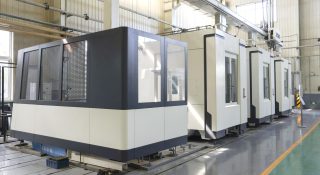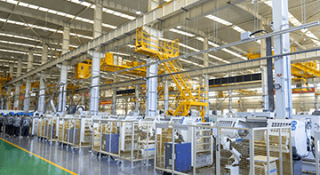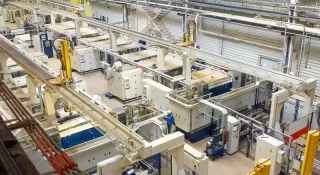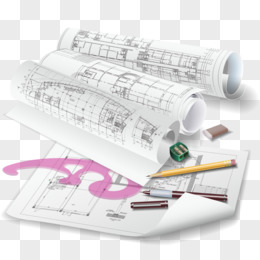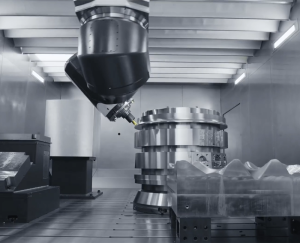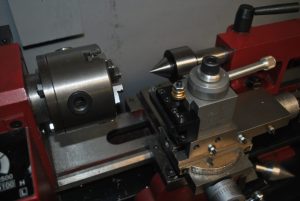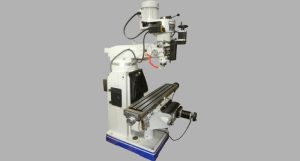In the ever-evolving world of manufacturing, precision and efficiency are paramount. Among the various technologies that cater to these needs, Wire EDM (Electrical Discharge Machining) machines stand out for their unparalleled accuracy and versatility. These machines use a thin, electrically charged wire to cut intricate shapes and complex geometries with remarkable precision. As industries increasingly demand components with tighter tolerances and more intricate details, understanding the workings and advantages of Wire EDM technology becomes crucial.
A Wire EDM (Electrical Discharge Machining) machine is a precision cutting tool that uses a thin, electrically charged wire to erode material from a workpiece. This process allows for highly accurate cuts, making it ideal for creating complex shapes and intricate details.
This article explores what Wire EDM machines are, how they operate, their development over time, and how they compare to other EDM technologies. This comprehensive guide will provide valuable insights into Wire EDM machines and their applications.
What is EDM?
Electrical Discharge Machining (EDM) is a process used to remove material from a workpiece through electrical discharges (sparks). This technique is ideal for cutting complex shapes and hard materials that are difficult to machine with traditional methods. EDM works on the principle of creating a controlled spark between an electrode and the workpiece, which erodes the material and shapes it accordingly.
What is Wire EDM
Wire EDM is a specific type of EDM that uses a thin, electrically charged wire as the cutting tool. Unlike conventional EDM, which uses a shaped electrode to erode the material, Wire EDM employs a continuous wire that moves through the workpiece. This allows for exceptional precision and the ability to cut complex geometries with high accuracy.
Development and Evolution of Wire EDM Machines
The evolution of Wire EDM machines reflects advancements in technology and increased demand for precision. From their inception to modern-day innovations, Wire EDM machines have undergone significant transformations.
Early Developments
Wire EDM technology began to take shape in the 1950s, focusing initially on creating complex tools and dies. Early models were limited in functionality and accuracy, paving the way for future advancements.
Key Milestones in Wire EDM Evolution
- 1960s: The introduction of Wire EDM technology, featuring a thin wire as the cutting tool, marked a significant advancement in precision machining.
- 1980s: The integration of CNC controls revolutionized Wire EDM, enabling automated and highly accurate cuts.
- 2000s: High-speed and high-precision Wire EDM machines emerged, enhancing capabilities and applications.
- Recent Developments: Innovations continue to improve cutting speeds, control systems, and wire electrode materials, driving further advancements in Wire EDM technology.
These milestones illustrate the ongoing progress and impact of Wire EDM machines in modern manufacturing.
How Wire EDM Machines Work
Wire EDM machines represent a sophisticated approach to precision machining, employing a continuous wire electrode to cut through various materials. The process is highly controlled and involves several key components that work in harmony to achieve the desired results.
Components of a Wire EDM Machine
Understanding the components of a Wire EDM machine is crucial to appreciating its operation. These machines consist of several essential parts, each contributing to the overall functionality:
- Wire Electrode: The primary cutting tool, which moves continuously through the workpiece.
- Workpiece: The material being machined, positioned securely during the process.
- Dielectric Fluid: An insulating fluid that aids in cooling and flushing away debris.
- Control System: A CNC (Computer Numerical Control) system that manages the cutting process and ensures precision.
With these components in place, the Wire EDM machine can perform intricate cuts and maintain high levels of accuracy throughout the machining process.

What Materials Can Be Cut Using Wire EDM?
Wire EDM is versatile in handling a variety of materials:
- Metals: Including steel, stainless steel, and titanium.
- Alloys: Such as tool steels and superalloys.
- Hard Materials: Like carbide and certain ceramics.
The ability to cut hard and exotic materials makes Wire EDM a valuable tool in industries requiring precision and durability.
Types of Wire EDM Machines
Different Wire EDM machines cater to varying needs, from basic models to advanced systems.
Basic Models
Basic Wire EDM machines are equipped with standard features suitable for general machining applications. These models are ideal for businesses that require reliable performance without the need for advanced capabilities.
Advanced Models
Advanced Wire EDM machines offer high-speed cutting, enhanced precision, and additional features such as multi-axis controls and automated loading systems. These models are designed for industries with demanding requirements and high production volumes.
Differences in EDM Types
To fully grasp the capabilities of Wire EDM machines, it’s essential to understand how they differ from other EDM technologies. Each EDM method has unique features and applications that make it suitable for specific tasks.
Difference Between Conventional EDM and Wire EDM
Conventional EDM and Wire EDM both utilize electrical discharges to remove material, but they do so in distinct ways:
- Conventional EDM: Uses a shaped electrode to create the desired form by eroding the workpiece. This method is effective for internal cuts and complex shapes but may face limitations in precision and surface finish.
- Wire EDM: Employs a continuously moving wire to cut through the material. This approach offers superior precision, smoother finishes, and the ability to create detailed shapes with ease.
These differences highlight Wire EDM’s advantages in applications requiring high accuracy and complex geometries.
Difference Between Plunge EDM and Wire EDM
Another comparison worth noting is between Plunge EDM and Wire EDM:
- Plunge EDM: Features a fixed electrode that penetrates into the workpiece to create cavities or shapes. It is well-suited for deep holes and internal features but may be less efficient for intricate designs.
- Wire EDM: Utilizes a moving wire to cut from various angles, allowing for the production of detailed and complex parts with high precision. This method’s flexibility makes it ideal for intricate and precise machining tasks.
Understanding these differences can help in choosing the right EDM technology based on specific machining requirements.
Advantages of Wire EDM
Wire EDM machines offer several key benefits that make them highly valuable in precision manufacturing.
Precision and Accuracy
Wire EDM machines are renowned for their ability to achieve exceptional precision and tight tolerances. Capable of producing parts with tolerances as tight as ±0.001 mm, Wire EDM is ideal for applications requiring exacting standards.
Material Versatility
Wire EDM can machine a wide range of materials, including hard metals and alloys that are challenging for other machining methods. This versatility extends its applicability across various industries.
Complex Shapes and Intricate Details
Wire EDM technology provides the ability to cut complex shapes and fine details, which offers a significant advantage. Industries such as aerospace and medical device manufacturing rely on this capability to produce detailed and precise components.
Disadvantages of Wire EDM
While Wire EDM offers numerous advantages, it also has some limitations:
- Cost: Wire EDM machines and their operation can be expensive compared to other machining methods.
- Speed: The cutting process can be slower than some traditional machining techniques, particularly for large or simple parts.
- Material Thickness: Wire EDM may not be the best choice for very thick materials or high-volume production due to its specific cutting constraints.
Understanding these disadvantages helps in assessing whether Wire EDM is the right choice for your needs.
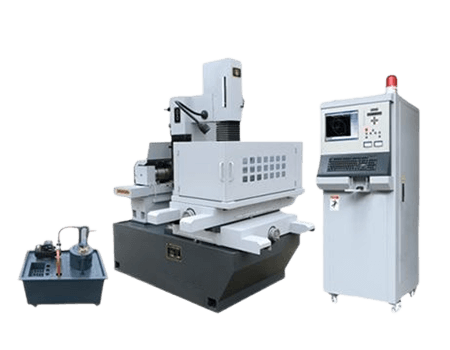
Applications of Wire EDM
Wire EDM machines are employed across numerous industries due to their precision and versatility.
Industries Using Wire EDM
- Aerospace: For producing complex parts with high precision.
- Automotive: In the creation of detailed components and prototypes.
- Medical Devices: To manufacture intricate parts for surgical instruments and implants.
- Tool and Die Making: For creating high-precision molds and dies.
Specific Applications
Wire EDM is used for precision parts, prototyping, and small batch production. Its ability to handle complex geometries and maintain high accuracy makes it a preferred choice for many manufacturing tasks.
Considerations for Buying a Wire EDM Machine
When purchasing a Wire EDM machine, several factors should be considered to ensure the best fit for your needs.
Key Features to Look For
Evaluate factors such as machine size, capacity, control system, and software. Additionally, consider the availability of maintenance and support services.
Cost and Investment
Wire EDM machines vary in price based on features and capabilities. Conduct a cost-benefit analysis to determine the most suitable model for your budget and requirements.
Maintenance and Troubleshooting
Proper maintenance and troubleshooting are essential for maintaining the performance and longevity of Wire EDM machines.
Routine Maintenance
Regular maintenance involves daily checks, periodic servicing, and addressing minor issues promptly. This helps ensure the machine operates efficiently and remains in good condition.
Troubleshooting Tips
Common issues with Wire EDM machines include wire breakage, electrical discharge problems, and alignment issues. Familiarize yourself with troubleshooting techniques to resolve these problems effectively.
How Do I Choose the Right Wire?
Selecting the appropriate wire for Wire EDM is critical for achieving optimal results. Here are some factors to consider:
- Wire Material: Common materials include brass and copper. Manufacturers often use brass for its cost-effectiveness and conductivity, while they prefer copper for better performance in certain applications.
- Wire Diameter: The diameter of the wire affects cutting speed and precision. Thinner wires are suitable for fine details, while thicker wires can handle larger cuts.
- Coating: Coated wires can provide additional benefits such as reduced wear and improved cutting performance.
Choosing the right wire involves balancing these factors based on your specific machining needs and material requirements.
How Much Does a Wire EDM Machine Cost?
The cost of a Wire EDM machine varies based on several factors:
- Machine Size and Capacity: Larger machines with greater capacities are generally more expensive.
- Features and Technology: Advanced models with high-speed capabilities, multi-axis controls, and automated systems come at a higher price.
- Brand and Manufacturer: Different brands offer varying price ranges based on their reputation and the features they provide.
On average, Wire EDM machines can range from $100,000 to over $500,000, depending on the specifications and capabilities required. Conducting a thorough cost analysis is essential for making an informed purchasing decision.
Future Trends in Wire EDM Technology
The Wire EDM industry continues to evolve, with ongoing advancements driving the technology forward.
- Technological Advancements
Future developments include faster cutting speeds, improved control systems, and new materials for wire electrodes. These innovations will further enhance the capabilities and applications of Wire EDM machines.
- Market Outlook
The Wire EDM industry is expected to grow, driven by increasing demand for precision machining and technological advancements. Staying informed about market trends can help businesses make strategic decisions regarding their manufacturing processes.
Conclusion
Wire EDM machines are a cornerstone of precision manufacturing, offering exceptional accuracy and versatility. Understanding their operation, advantages, and applications can help you make informed decisions about incorporating this technology into your processes.
FAQs
How has Wire EDM technology evolved over the years?
Wire EDM technology has progressed from its early days with limited capabilities to include CNC controls, high-speed cutting, and advanced materials, enhancing its precision and applications.


